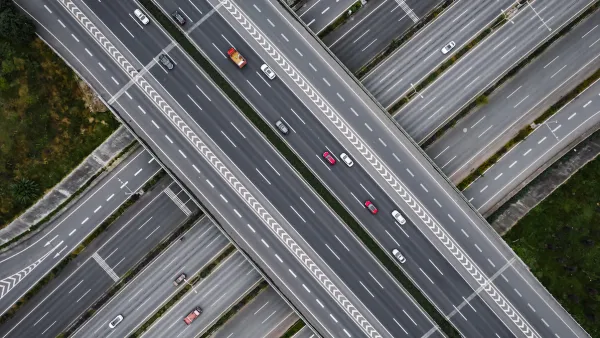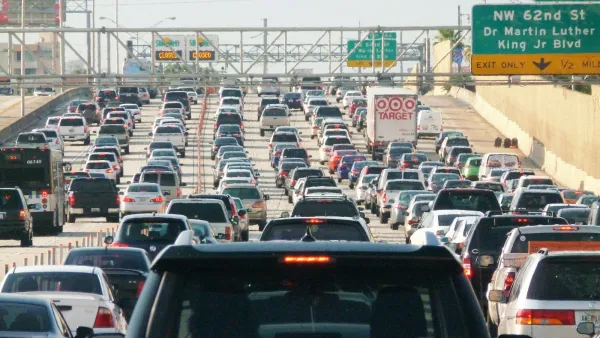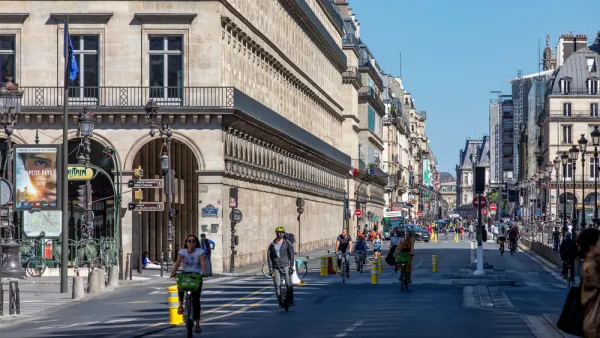Banning cars will not be effective as long as U.S. cities continue to prioritize transportation systems where mobility is dependent on driving.

Culdesac Tempe is a new Arizona development where cars will be banned—a strategy to encourage less driving, but one that does not address the broader issues, writes Joseph W. Kane. "Rather than focusing on an outright ban on cars, we need to make it easier for more people to live in places where shorter trips are the norm, and driving across an inefficient and inequitable built environment isn’t always necessary."
Culdesac Tempe’s vision is commendable, says Kane, but sustainability within the development will not change the fact that people still need to drive to get to work, shopping, school, and other destinations in the metropolitan Phoenix area.
Transportation systems too often privilege cars, and the car-centric landscapes of many American cities are reflected in trends in recent years such as the increase in vehicle numbers and vehicle miles traveled.
Kane suggests that the United States look abroad for examples of effective policies and design measures that foster density, decrease driving, and offer a range of transportation options. "European cities stand out here, from Barcelona’s 'superblocks' planning effort, to Ghent’s pedestrian zone, to Copenhagen’s bicycle highways."
But some cities in the United States have also implemented strategies that are making a difference, notes Kane, including pedestrian-friendly neighborhood design, parking minimums, and congestion charges. "These efforts encourage people to drive less, while incentivizing the creation of more walkable, livable communities."
FULL STORY: Banning cars won’t solve America’s bigger transportation problem: Long trips

Analysis: Cybertruck Fatality Rate Far Exceeds That of Ford Pinto
The Tesla Cybertruck was recalled seven times last year.

National Parks Layoffs Will Cause Communities to Lose Billions
Thousands of essential park workers were laid off this week, just before the busy spring break season.

Retro-silient?: America’s First “Eco-burb,” The Woodlands Turns 50
A master-planned community north of Houston offers lessons on green infrastructure and resilient design, but falls short of its founder’s lofty affordability and walkability goals.

Test News Post 1
This is a summary

Analysis: Cybertruck Fatality Rate Far Exceeds That of Ford Pinto
The Tesla Cybertruck was recalled seven times last year.

Test News Headline 46
Test for the image on the front page.
Urban Design for Planners 1: Software Tools
This six-course series explores essential urban design concepts using open source software and equips planners with the tools they need to participate fully in the urban design process.
Planning for Universal Design
Learn the tools for implementing Universal Design in planning regulations.
EMC Planning Group, Inc.
Planetizen
Planetizen
Mpact (formerly Rail~Volution)
Great Falls Development Authority, Inc.
HUDs Office of Policy Development and Research
NYU Wagner Graduate School of Public Service




























